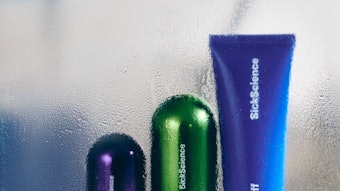The natural beauty market has been evolving toward more effective and truly natural products, writes Kline & Company project manager Agnieszka Saintemarie in a recent blog post, however, she questions whether this the most effective strategy for brands aiming to succeed in the segment.
The demand for natural personal care products remains strong within Western Europe and North America, according to Saintemarie, and and while growth may be tapering in these mature markets, the share of the naturals segment in the overall beauty market is increasing and remains resilient.
Several significant factors are affecting and driving the growth of naturals, which Kline forecasts to remain strong through 2016. A pertinent factor consists of heightened consumer awareness of health, environmental and sustainability concerns—as well as product ingredients and their efficacy.
Recognizing that a brand’s truly natural aspect is far more positively perceived by consumers compared to the brands that are merely naturally inspired, writes Saintemarie, brand owners are making efforts to reformulate their products using truly natural ingredients and move from naturally-inspired to truly natural—and consumers are seeking out more information concerning the ingredients as they attempt to discern between the two. However, many consumers are still unable to distinguish between the two. Similarly, a sizeable number of consumers are confused about what precisely constitutes a natural product as new ingredients are introduced, new brands are launched, and existing products are reformulated.
Consequently, for additional marketable legitimacy, some brands are seeking to conform to universally recognized standards certified by esteemed independent agencies to enforce the credibility of their natural brands.
And despite the upswing in 2011 sales of truly natural products (as defined by Kline’s proprietary rating metric), the share of truly natural remains smaller than that of natural-inspired—though still accounting for a sizeable overall 43% share of the natural personal care sales in the United States and about 32% in Europe.
This dynamic may be explained by new companies recognizing the potential in the natural beauty market and entering the market to earn a share of the sales. And many of these companies launch natural-inspired products, which effectively boosts the overall performance of that niche segment. Despite this, the growth of the natural-inspired segment is lower than both the market average and the growth rate of the truly natural segment.
There are several reasons why a company may not succeed even with the most exciting, efficient and natural product, notes Saintemarie, as particular attention needs to be applied to product introduction/consumer education and marketing messages. The somewhat elastic definition of what is “natural” continues to change and evolve, leading to oftentimes disadvantageous confusion in the marketplace. Given the seemingly blurred line between truly natural and naturally inspired products in many consumers’ minds, it remains essential that companies use clear product labels and marketing messages to highlight the natural aspects of a given product’s ingredients to attract knowledgeable consumers and educate potential new customers.
Kline & Company will discuss the European and U.S. natural care markets at the Natural Beauty Summit America, May 14–15, 2012, and present "The Next Multi Billion Dollar Market: A Global Perspective" at InnoCos USA, July 11–12, 2012.
InnoCos USA features interactive workshops and case study sessions on new trends, new markets, new products and how brand owners can maximize business success by putting innovation at the core of their company. The Natural Beauty Summit America will focus on strategies and technologies for beauty industry thought leaders interested in integrating a more sustainable approach in both product development and their companies.










